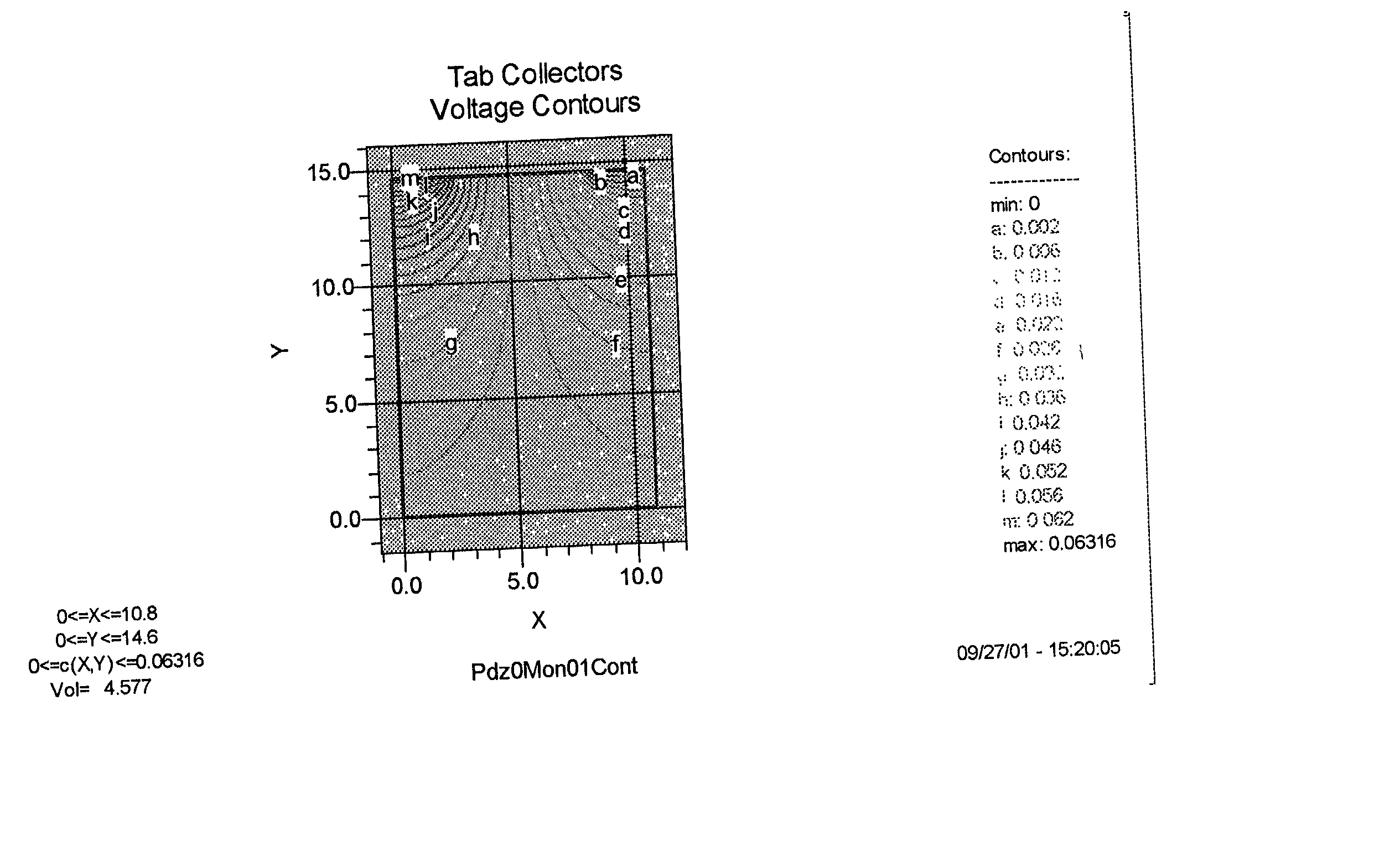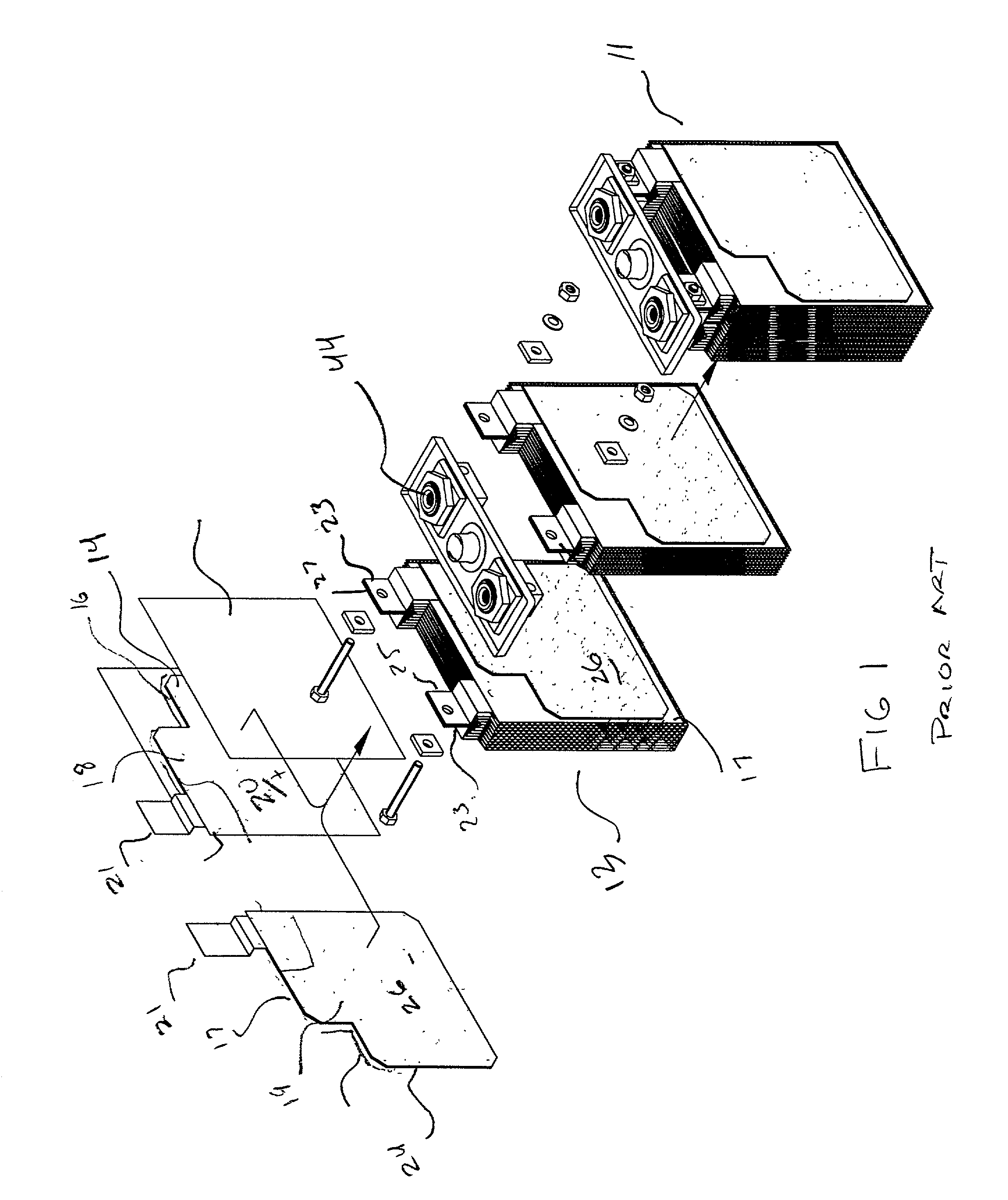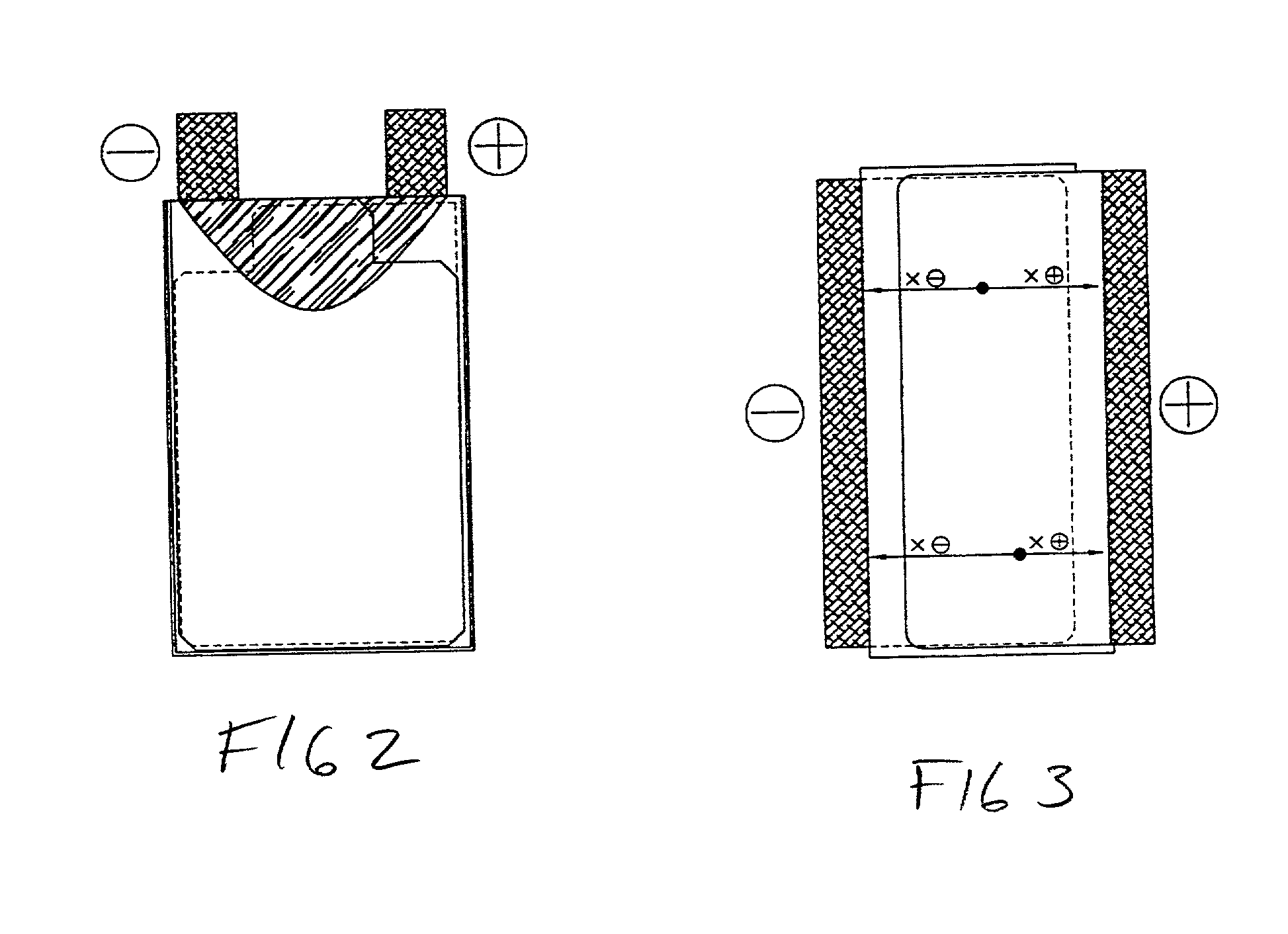Prismatic battery with maximized and balanced current transmission between electrodes and terminals
a technology of current transmission and battery, which is applied in the direction of wound/folded electrode electrodes, sustainable manufacturing/processing, cell components, etc., can solve the problems of overheating, battery damage, and rechargeable batteries that are too fast to overwhelm the internal connection of the terminal to the electrode, and achieve maximum current transfer
- Summary
- Abstract
- Description
- Claims
- Application Information
AI Technical Summary
Benefits of technology
Problems solved by technology
Method used
Image
Examples
Embodiment Construction
[0052] Referring now to FIGS. 1-2 which depict the prior art of conventionally manufactured prismatic cells. FIG. 1 depicts an exploded view showing a plurality of stacked electrodes 13 forming a conventionally configured prismatic battery cell 11. In conventional prismatic cells 11 positive electrodes 14 are formed by placement of positive active material 18 on a substrate 16 to form the positive active surface area 20.
[0053] Negative electrodes 24 are formed by the placement of negative active material 19 on substrate 17 thereby forming a negative active surface area 26. The positive electrodes 12 and negative electrodes 24 are placed in a stacked arrangement with separators 30 of non-conductive material sufficiently porous to allow passage of the chosen electrolyte therethrough, positioned in between each of the plurality of positive electrodes 14 and negative electrodes 24.
[0054] Transmission of the current or electrical from positive active surface area 20 and the negative acti...
PUM
 Login to View More
Login to View More Abstract
Description
Claims
Application Information
 Login to View More
Login to View More - R&D
- Intellectual Property
- Life Sciences
- Materials
- Tech Scout
- Unparalleled Data Quality
- Higher Quality Content
- 60% Fewer Hallucinations
Browse by: Latest US Patents, China's latest patents, Technical Efficacy Thesaurus, Application Domain, Technology Topic, Popular Technical Reports.
© 2025 PatSnap. All rights reserved.Legal|Privacy policy|Modern Slavery Act Transparency Statement|Sitemap|About US| Contact US: help@patsnap.com



